Giving Musicians the Tools to Make Better Music
Analog vs. Digital Synthesizers: What’s the Real Difference?

Hey, synth enthusiasts and music lovers! Welcome back to Music By Mattie, where we unravel the intricacies of the audio world like it’s a piece of cake—or in this case, a gnarly, wobbling synth line. Today we’re digging deep into a question that has been dividing musicians and producers alike for years: Analog vs. Digital Synthesizers. Yeah, it’s a battle of the titans, and I promise, no punches will be pulled.
So, why should you even care about this debate? Good question. It’s like asking why we even need salt and pepper. Sure, your meal might be edible without them, but throw ’em in the mix, and BAM! You’ve got yourself a dish to remember. Similarly, whether you’re crafting the next chart-busting hit or sculpting ethereal soundscapes for an art installation, the kind of synthesizer you use can make or break your sound.
It’s not just a matter of pressing a few buttons and twisting a few knobs. No, siree! This is about creating sonic art. This is about waving your audio wand and conjuring a sound that makes people say, “Holy cow, what was that?” So, are you Team Analog or Team Digital? Grab your battle gear, folks; this is gonna be one hell of a ride!
Oh, and if you’re scratching your head over what “analog” and “digital” even mean, you might wanna check out my previous blog post on Analog vs. Digital Audio Explained. It’ll give you a nice primer and set the stage for what’s to come.
Get to know your synthesizers with Sound on Sound
Ready? Let’s get this showdown started!
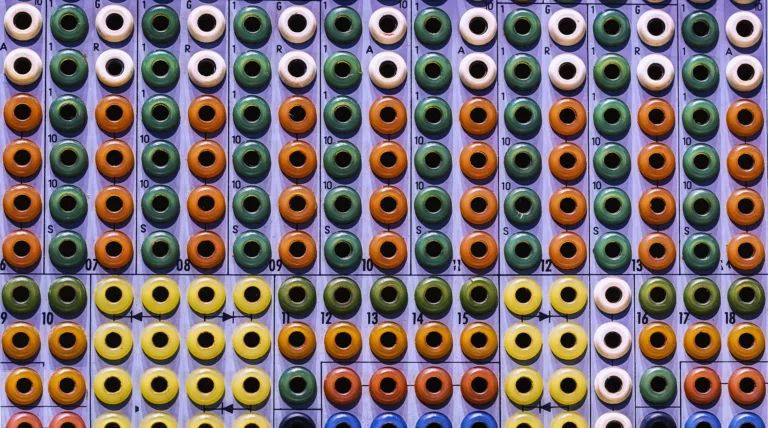
The Sound Differences: Analog Warmth vs. Digital Precision
Alright, let’s cut to the chase. The reason you’re even here is probably because you’re dying to know which type of synthesizer is going to make you sound like the next Aphex Twin or Deadmau5, right? Okay, maybe not, but let’s delve into the meat and potatoes (or tofu and quinoa, if you’re vegan) of this great debate: the sound.
Picture this: Analog is like a seasoned chef who doesn’t measure ingredients but knows just how much of each spice to throw in for that perfect dish. There’s a warmth, a richness, and a touch of unpredictability that makes every meal unique. The circuits, the oscillators, the filters—they all work in unison to serve up a kind of sound that feels like a warm hug from your grandma. If you’re working on a project where the “feel” of the sound matters just as much as the technicalities, then analog has got your back.
But what about digital? Think of it as a meticulously programmed food processor with every setting imaginable. You want to blend, chop, or pulverize? You’ve got buttons for that. Similarly, a digital synth gives you precision that is just not possible in the analog realm. Need to recreate that complex pad or lead from your favorite EDM track? A digital synth can clone it so precisely that even a sonic detective would have a hard time telling them apart.
Yet, there’s a myth—yeah, it’s practically folklore—that digital synths lack soul. That they’re too “cold” or “clinical.” Let me tell you, that’s like saying a Tesla lacks the soul of a ‘60s muscle car. Both have their merits; it just depends on what you value more: the irreplaceable roar of a combustion engine or the smooth, efficient hum of an electric motor.
Can’t decide? Well, then you’re in the lucky position of being able to benefit from both worlds. Heck, plenty of artists and producers use both analog and digital in their setups. Why limit yourself, right?
If you want to dig deeper into the sound quality aspects of this debate, check out my article Signal Quality Compared: Analog vs. Digital. It’s like the Yelp for sound quality.

The Features and Functionality: Bells and Whistles vs. Nuts and Bolts
Let’s get practical for a second. We’ve talked about history and sound, but what about the nitty-gritty features that can make or break your next musical masterpiece? Let’s dig in like a pig in mud.
Analog Synths
So, you’re into hands-on stuff, huh? Analog synths offer tactile knobs, switches, and sliders that make you feel like you’re really sculpting your sound. There’s something incredibly satisfying about turning a knob and hearing the sound morph in real-time. It’s like the audio version of painting, where each brush stroke has an immediate impact.
But, and there’s always a but, analog synths often have fewer features. For instance, storing and recalling presets is usually a no-go. So if you find that sweet spot for a killer lead sound at 2 am after five glasses of red wine, you’d better write down every setting unless you have a photographic memory. Or, you know, you like living on the edge.
Digital Synths
These bad boys are the Swiss Army knives of the synth world. Many digital synths come loaded with a plethora of options: built-in sequencers, arpeggiators, and a range of effects like reverb, delay, you name it. You can store and recall presets till your heart’s content. And let’s not forget the whole software integration part, where you can effortlessly dive into the digital domain with plug-ins and DAW compatibility.
So what’s the catch? Well, it can be overwhelming. Having too many options can be like trying to find a decent dating partner in a city of millions. The paradox of choice, my friend, is a real thing.
Now, what if I told you that you don’t have to be Team Analog or Team Digital? Spoiler: Hybrid synths exist, and they’re like the unicorns of the synth world—magical creatures that offer the best of both universes. Curious? Head over to my article, Mixer Face-off: Analog vs. Digital – Which Should You Choose?, for a broader perspective on combining the analog and digital realms.
Discover in-depth features of different types of synths on Sound on Sound
So, are you a ‘less is more’ kind of person, or are you in the ‘more is more’ camp? Chew on that for a minute, and when you’re ready for the grand finale, just say “continue.”
Summon me back into the ring with a swift “continue,” and we’ll bring this heavyweight battle to its thrilling conclusion.

Versatility and Functionality: Which Offers More? An Epic Smackdown
Alright, let’s roll up our sleeves for this one because it’s going to get intense. Versatility and functionality are like the Marvel superheroes of the synthesizer universe—each with its unique powers, and we all have our favorites. So let’s settle this once and for all.
Digital Synthesizers: The Swiss Army Knife
Digital synths are like your overachieving friend who speaks seven languages, runs marathons, and somehow still has time to make homemade kombucha. These machines offer you everything but the kitchen sink. Need an arpeggiator? Got it. Want built-in effects? You betcha. How about integrating seamlessly with your DAW? Done and done.
And let’s talk about presets, shall we? If you’re a preset junkie, then digital is your playground. You can cycle through hundreds, even thousands, of different sounds, tweaking them to your heart’s content. This is especially handy when you’re in the ‘exploratory phase’ of your project, aka the “I have no idea what I’m doing but let’s see what happens” phase.
However, be warned: The sheer number of options can lead to ‘analysis paralysis.’ You know, that moment when you’re staring blankly at the screen, overwhelmed by 400 types of reverb. Been there, done that, bought the t-shirt.
Analog Synthesizers: The Artist’s Palette
Ah, the analog synth. It may not speak seven languages, but it speaks the language of the soul, man. While it may lack the endless options and flashy features of its digital counterpart, what it does offer is depth. The sound quality, the tactility, and the nuances you can pull out of an analog synthesizer can sometimes feel unparalleled.
Now, you might think that this limits your creativity, but hold your horses! This is where constraints become a good thing. When you have fewer variables to work with, you dig deeper into each one. It’s like having a limited palette of colors but mastering them so thoroughly that you create a masterpiece.
And just for the record, analog synths can offer some wild modular capabilities. Want to connect that oscillator to that filter and then route it through a third-party effects pedal? Go nuts! These unique routes and connections are something digital struggles to replicate fully.
I did a deep dive into how analog really shines in certain setups in my article Amplifying Your Sound: Analog vs. Digital Amplifiers. It’s a read worth its weight in gold—or in decibels, if you prefer.
Deep-dive into the modular world with this guide by Resident Advisor
So, what’s it going to be? Do you want a pocket knife that can also send an SOS signal, or do you want a finely crafted blade that does one thing but does it exceedingly well?
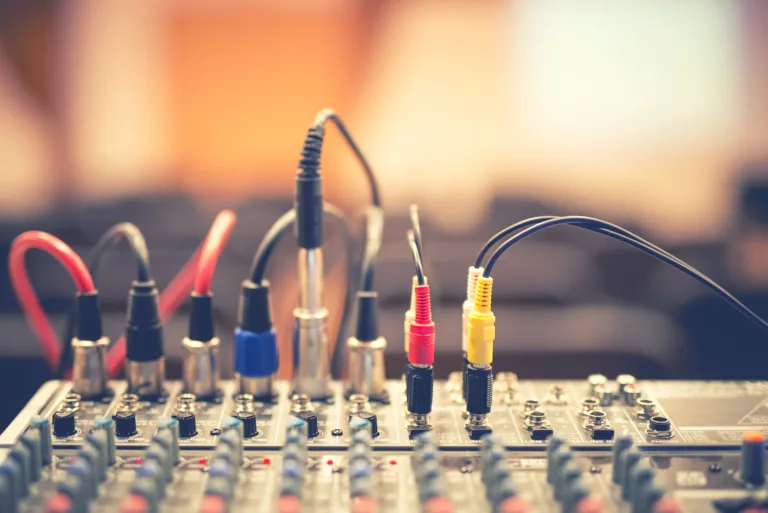
The Workflow: Convenience or Complexity? Navigating the Labyrinth
Let’s talk about workflow because, let’s face it, if your gear isn’t flowing like the lyrics to your favorite rap song, then what’s the point? Workflow is the unsung hero of any music production setup, and how your synth integrates into that can make or break your creative groove.
Digital Synthesizers: The Streamlined Experience
Think of a digital synthesizer like the Google Drive of music production. It’s in the cloud, it’s easily accessible, and you can collaborate with multiple people or, in this case, multiple devices. With a digital synth, you’re just a USB connection and a software install away from complete DAW integration.
And oh, the patches. Import them, export them, share them with friends or online communities. Your work is portable, like taking your office with you but without the dread of impending deadlines. It’s the kind of setup that’s designed to make your life easier.
Now, for beginners, digital can be a godsend. With all those presets and tutorials available online, you can start producing tracks that sound halfway decent, even if you don’t know an LFO from your elbow. Want to know more about making your first steps less stumbling? Check out my article Signal Quality Compared: Analog vs. Digital for some pro tips.
Learn basic synthesizer terminologies and workflows with Berklee Online
Analog Synthesizers: The Tinkerer’s Paradise
With analog, you’re in for a more tactile experience. This is where you get your hands dirty, in a good way. While it might not be as plug-and-play as digital, what you lose in convenience, you gain in hands-on control.
Here’s the thing—there is a learning curve. Imagine trying to learn to paint by starting with a blank canvas every time; it’s the same with analog. Each knob, each slider becomes your brushstroke, and it’s all on you to make it a work of art.
However, mastering this kind of complex, hands-on workflow can be incredibly rewarding. You’re not just following the steps to assemble an IKEA desk; you’re carving a piece of furniture from scratch. Once you get it, you’ve attained a level of artistic freedom that’s hard to beat. This might sound intimidating for a newbie, but hey, even Hendrix had to start somewhere. I broke down some of these elements in Pedal Power: Analog vs. Digital Effects Pedals Compared, to give you more insights into how analog can affect your workflow.

Costs: What’s the Damage? Breaking Down the Dollars and Cents
Ah, money. That all-important yet painfully elusive resource that dictates whether you’ll be slinging beats in a home studio or on a street corner with a bucket and drumsticks. When it comes to synthesizers, the difference between analog and digital can be as stark as a night at the opera versus Netflix and chill. Let’s dig into it, shall we?
Digital Synthesizers: Bargain or Bust?
For those of you who enjoy indulging in multiple streaming subscriptions and $5 lattes (you know who you are), digital synthesizers might be your jam. They’re generally easier on the wallet upfront, offering a broad range of options from entry-level to pro.
These devices often pack in more features per dollar, largely because 0s and 1s are a lot cheaper to manufacture than actual hardware components. If you’re a savvy shopper, you could land a high-quality digital synth for a fraction of what you’d pay for an analog counterpart. Oh, and let’s not forget, many digital synths offer endless upgrades via software. It’s the gift that keeps on giving, like a blog you can’t help but subscribe to (hint, hint).
Interested in more ways to stretch that dollar? Visit my piece on Mixer Face-off: Analog vs. Digital, Which Should You Choose? for some more budget-friendly insights.
Check out affordable digital synthesizers on Sweetwater
Analog Synthesizers: The Price of Purity
On the flip side, if you’ve got a taste for the finer things in life—single malt scotch, leather-bound books, and bespoke suits—then maybe you’re willing to drop some coin on an analog synth. These beauties don’t come cheap. Between the hardware components and the sheer craftsmanship that goes into building one, you’re looking at a serious investment. It’s like buying a classic car, and just like a classic car, it can appreciate in value.
However, let’s be real here; you don’t need to sell a kidney to afford an analog setup. The modular nature of many analog synths allows you to start small and build up your system over time. Still, even a basic setup could have you dipping into your vacation fund, so make sure you’re committed. Budget-conscious? I’ve covered how to get a bang for your buck in the analog realm in my post Amplifying Your Sound: Analog vs. Digital Amplifiers.
Invest in quality analog synthesizers at Reverb
So, whether you’re pinching pennies or have money burning a hole in your pocket, there’s a synth for you. But remember, a more expensive instrument doesn’t make you a better musician. That comes from practice, passion, and maybe a touch of masochism.
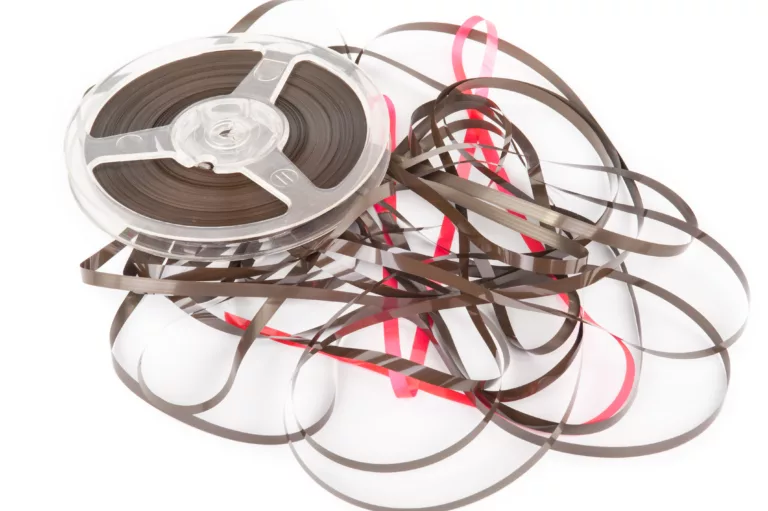
The Real-World Applications: Who’s Using What? A Peek Into the Pro World
Alright, you aspiring Deadmau5s and Daft Punks, listen up. We’ve dissected the costs, but what about the real-world applications? Who’s actually using these synths, and where are they shining the brightest? Are digital synths reserved for bedroom producers, or are they gracing the stages of Coachella? And are analog synths solely the domain of middle-aged audiophiles who still buy vinyl?
Digital Synths: Not Just For Noobs
Digital synthesizers have been embraced by the pros in a big way, especially in genres like EDM, Pop, and Hip-Hop. They offer a level of consistency and ease of use that’s particularly useful for live performances. You’ve got the presets, the programmability, and hey, they’re lighter to carry. Plus, the latest digital technology is pretty damn impressive, emulating sounds so well you’d think you’re listening to an analog.
Artists like Skrillex and Zedd, as well as producers like Metro Boomin, swear by digital for its adaptability and vast sonic palette. You can read more about how digital fares in a variety of settings in my post, Signal Quality Compared: Analog vs. Digital.
Discover what artists use on Equipboard
Analog Synths: Old School Cool
Now, let’s talk about the stalwarts who keep the analog flame burning. These are often the purists, the experimental musicians, and those who want to physically touch and alter the sound they produce. Artists like Nine Inch Nails, Jean-Michel Jarre, and even the legendary Kraftwerk have long been proponents of analog synths.
There’s a reason why you’ll find analog setups in genres like Jazz, Experimental Music, and good ol’ Rock ‘n Roll. If you’re diving deep into the esoteric worlds of ambient or drone music, analog is often the go-to. Why? It’s all about texture, baby—those warm, organic, complex sounds that digital still struggles to emulate convincingly. For a closer look at the fidelity question, check out my blog on Analog vs. Digital Recording: Which Captures Music Better?.
Analog Artists to Follow on Resident Advisor
In the end, whether you go analog or digital could be dictated by the type of music you want to create, your workflow, or heck, even the kinds of musicians you want to hang out with (not judging, well maybe a little).
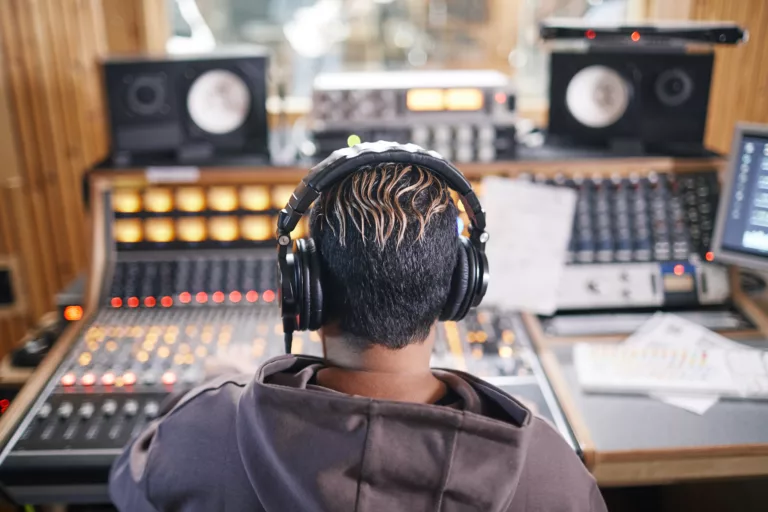
User Testimonials: What Are People Saying? The Court of Public Opinion
So, you’ve heard my spiel, analyzed the facts, and maybe done a little shoulder shimmy while thinking about all the tunes you’ll create. But you’re smart. You know not to take just one person’s word for it, even if that person is as incredibly charming and insightful as yours truly. So, what does the collective keyboard-smashing crowd have to say?
Digital Synths: The Reddit Raves
Ah, Reddit—the hallowed ground where debates rage, and where, if you’re not careful, you could get downvoted into oblivion. In this court, digital synths seem to be the darling child. Users often praise the flexibility, preset libraries, and the fact you can start producing right away. Here’s a gem I found on r/synthesizers:
“Love my digital synth! I can tweak settings on my PC and upload ’em right there. It’s like having a new synth every day, with the amount of online presets available.”
— u/DigitalDreamer93
For a detailed walkthrough of some more ‘Reddit-approved’ digital synths, check out Analog vs. Digital Synthesizers: What’s the Real Difference?.
Reddit’s r/synthesizers thread
Analog Synths: The Gearslutz Gospel
On the flip side, you have the Gearslutz forums—a place where vintage gear is worshipped, and the word ‘digital’ might as well be a curse in some threads. Analog lovers wax poetic about the ‘feel’ and ‘soul’ of their synths, often emphasizing the hands-on experience.
“There’s something organic about tweaking knobs and hearing the immediate change in sound. It’s like I’m sculpting the air itself. Yeah, it sounds poetic, but that’s how it feels!”
— SoundSculptor_84 on Gearslutz
For more hands-on-the-knobs action, revisit my previous exposé, Mixer Face-off: Analog vs. Digital, Which Should You Choose?
Analog Synth Threads on Gearslutz
Opinions are like synthesizers—everyone’s got one, and they all make different noises. But if there’s anything to take away from these clashing testimonials, it’s that both analog and digital have their die-hard fans for very good reasons. Like anything in life, it’s all about what you want to get out of it.

Why I’m Team Digital (Most of the Time)
If I had to pick a side—and let’s be real, no one is holding a Moog synthesizer to my head to make me choose—I’d go Team Digital. And not just because it’s the wave of the future, man, but because it fits my personal needs like a glove.
Cost-Effectiveness: Because I Like Keeping My Money
Look, I love a good vintage analog synth as much as the next guy, but let’s talk turkey—or rather, money. Good analog gear can cost as much as a used car, and I’m not talking about a junker either. Digital synths often come in at a fraction of the cost, especially if you’re going the software route. You get a wide array of sounds without having to sell a kidney, which is always a plus in my book. For some budget-friendly choices, check out my article on Amplifying Your Sound: Analog vs. Digital Amplifiers.
Convenience: Because I Have Places to Be
I don’t know about you, but I don’t have all day to fiddle with patch cables (though it’s super fun when I do have the time). Digital synths, with their presets and user-friendly interfaces, get me where I need to go—musically speaking—faster. It’s not just about speed; it’s about workflow efficiency. You can save and recall settings in a snap, making it easier to focus on the music rather than the machinery.
Ease of Use: Like Sunday Morning
Let’s face it; digital synths are often easier to understand, especially if you’re a newbie. With intuitive interfaces and sometimes even touchscreen controls, you’re more likely to hit the ground running rather than stumble and bumble around. This isn’t just good for beginners; it’s great for seasoned pros who want to capture that creative spark when it flies. You can’t underestimate the value of being able to actualize your musical ideas quickly and easily.
So, for me, the choice is pretty clear most days. While I’ll always love the tactile, hands-on experience of analog, digital synths win for their cost-effectiveness, convenience, and ease of use.
“Making music is cool.” – Mattie
The Final Act: It’s All About Choices, Baby
So here we are at the end of this melodious journey, and if you’re still pondering whether to go analog or digital, let me hit you with a recap that’s as tight as a well-tuned drum machine.
- Sound: Analog is all about that warm, gritty texture while digital excels in clarity and precision.
- Versatility: Digital often offers more bells and whistles, but analog has its unique charms that can’t be replicated.
- Workflow: Analog can be complex but rewarding; digital is often more convenient and easy to pick up.
- Cost: Digital is generally more budget-friendly, especially if you’re just starting out or, like me, enjoy having some extra beer money.
- Real-World Applications: Artists and producers in various genres are using both, often even within the same setup.
- User Testimonials: Opinions are like synthesizers—everyone’s got one, and they’re all a bit different.
- My Personal Take: Digital wins for me due to cost savings, convenience, and ease of use.
So when someone asks you, “Analog or digital synths?” You can cock an eyebrow, smirk, and say, “Well, it’s complicated.” Because, darling, it really is. The choice between analog and digital isn’t just black and white; it’s a palette of possibilities. It’s less about choosing a side and more about understanding what each brings to the table. Or in our case, the studio.
Feel like diving deeper? Don’t miss my post on The Ultimate Showdown: Analog vs. Digital Audio Explained to get the full 411.
Call to Action: Get Involved, Synth Lovers!
And there we have it, the end of yet another magical mystery tour of the sound world. But the conversation isn’t over. In fact, it’s just getting started. So hit that subscribe button for more jaw-dropping insights into the universe of music production. Got a burning opinion or question? Drop a comment below; I’m all ears. And if this article struck a chord, do the social thing and share it with your network. Let’s get the dialogue, or should I say, the “synth-alogue,” going.
Until next time, keep those beats fresh and your synths even fresher. 🎹🎶
Thanks for reading! If you still need help, check out my Free Vocal Presets for Logic Pro X that will get your vocals sounding amazing in no time!!
Mattie
Check Out Our Other Articles!
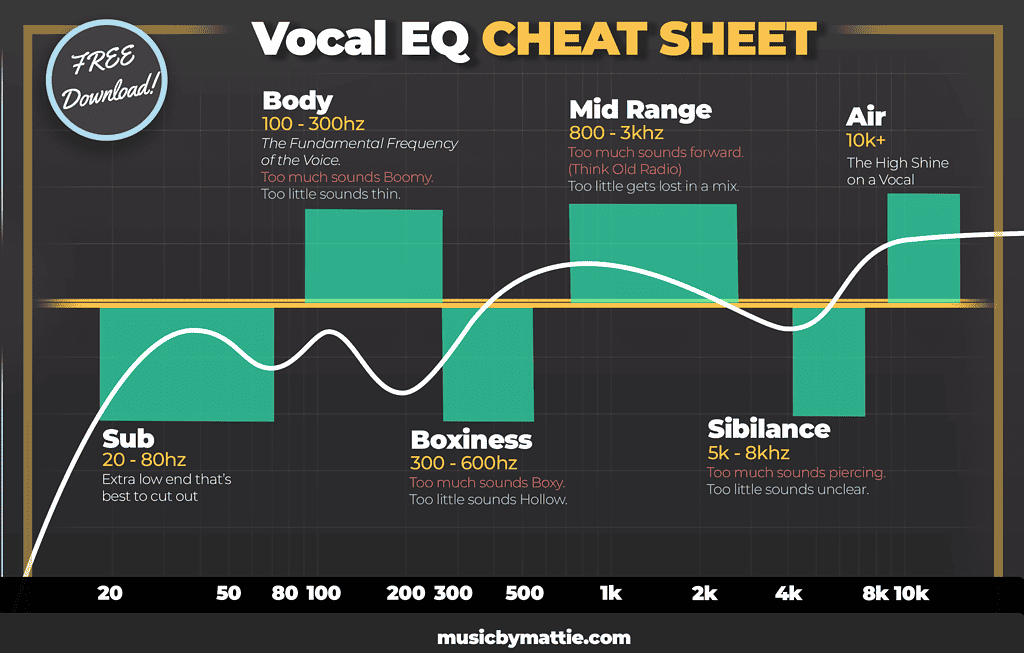
Download our FREE Vocal EQ Cheat Sheet!
Mattie
Post Info
Join "5 Beat Friday"
Every week you'll get 5 beats about the production world. Join the over 5,000+ other producers bettering themselves through 5 Beat Friday!

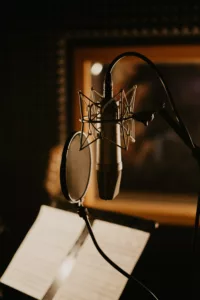
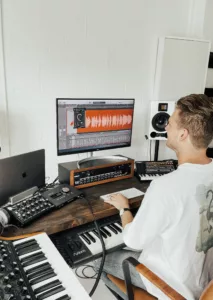

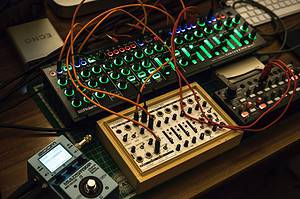

1 thought on “Analog vs. Digital Synthesizers: What’s the Real Difference?”
It’s remarkable to pay a quick visit tis website and reading the views of
all mawtes concerning this paragraph, while I am also keen of getting knowledge.
Here iis my blog :: https://penzu.com/p/c961de29